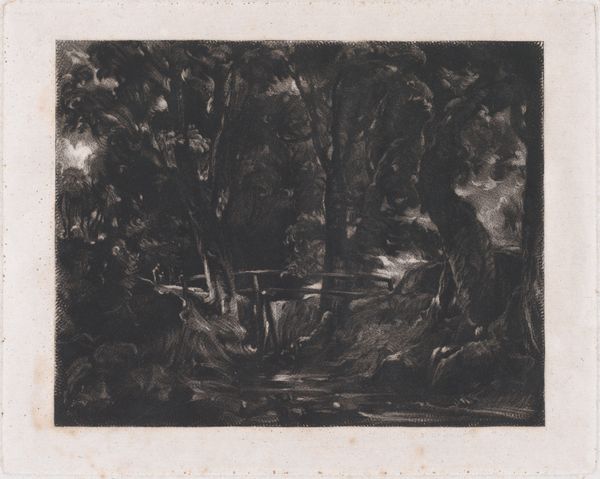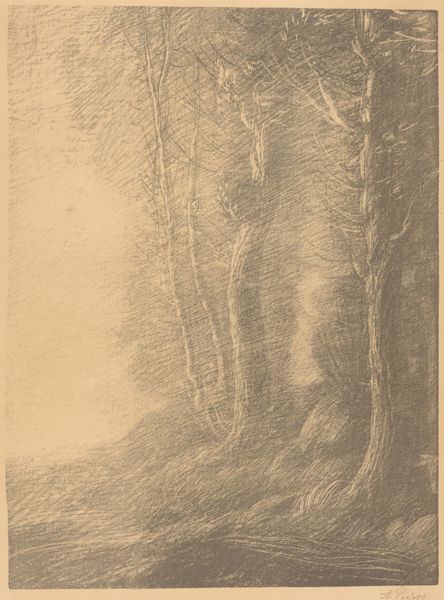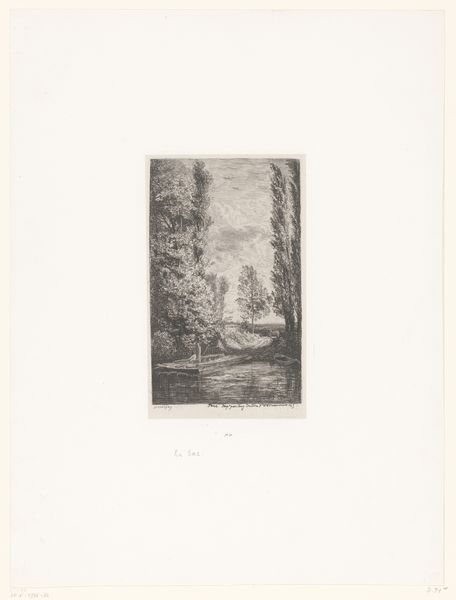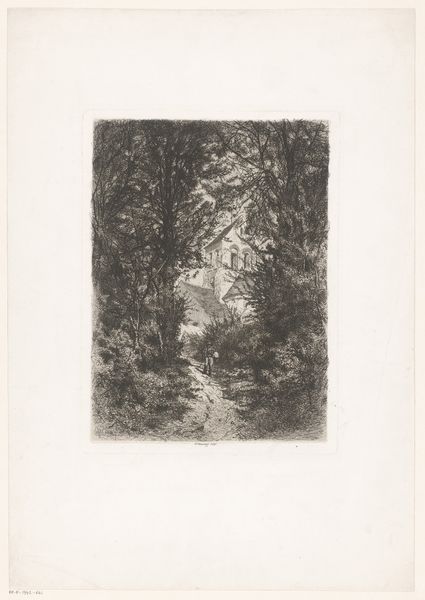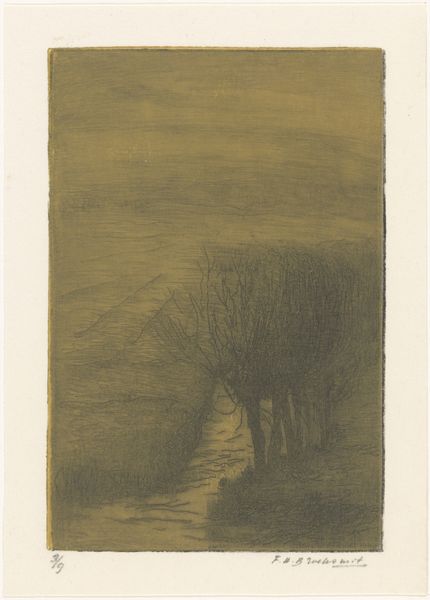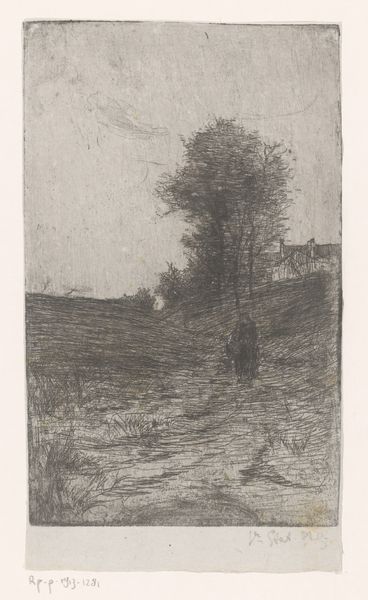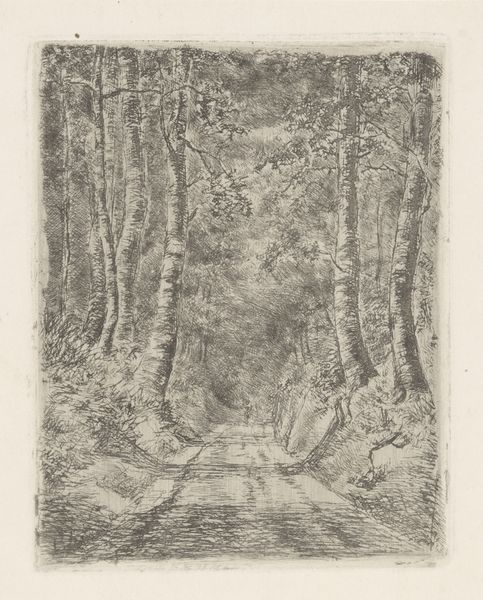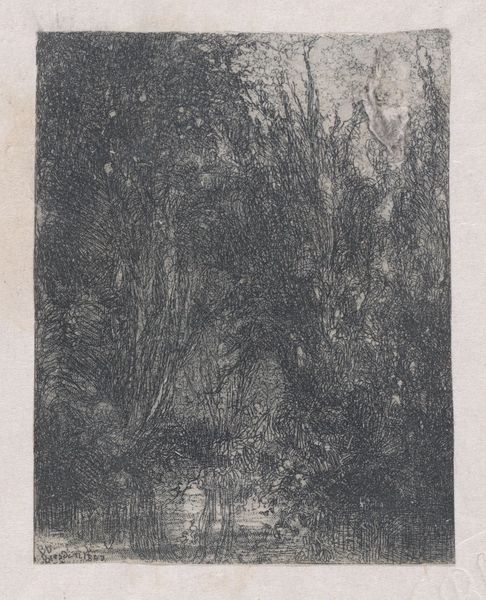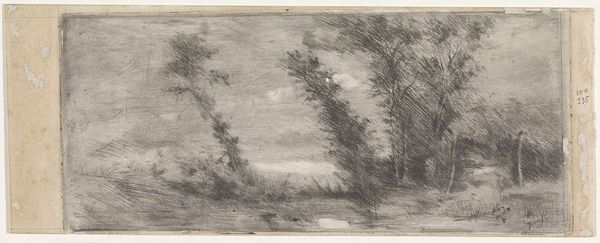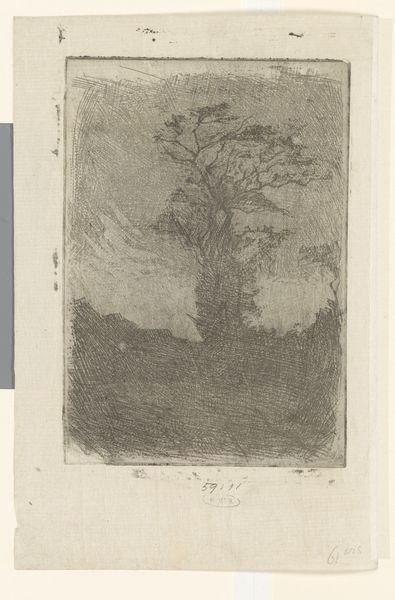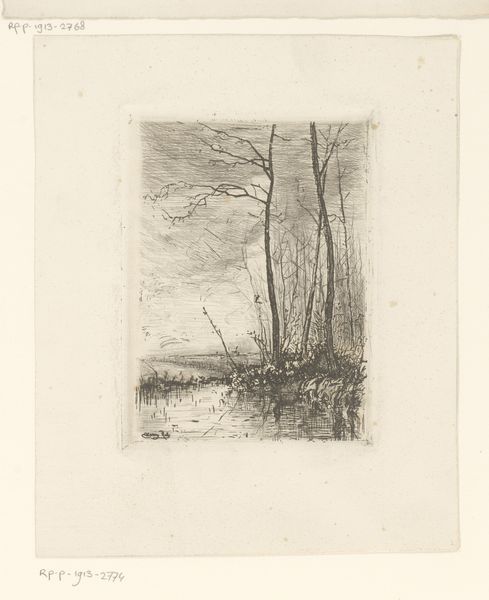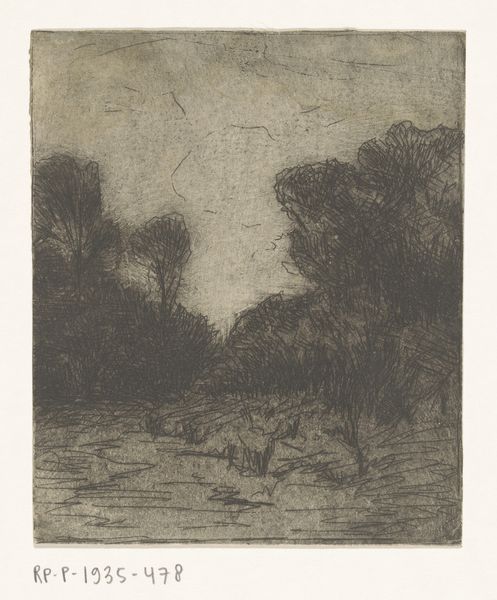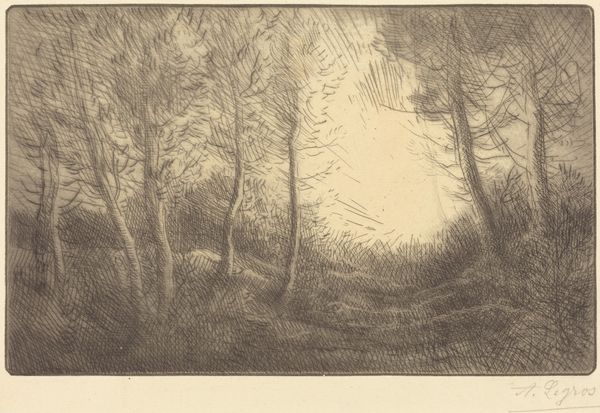
Dimensions: plate: 17.5 × 14 cm (6 7/8 × 5 1/2 in.) sheet: 46.5 × 33.7 cm (18 5/16 × 13 1/4 in.)
Copyright: National Gallery of Art: CC0 1.0
Vittore Grubicy made this etching, Wooded Landscape with a Cart, sometime in the late nineteenth century. It’s a simple scene, but it reflects some complex cultural attitudes. Grubicy was Italian, and in Italy, the late 1800s were a time of rapid industrialization, urbanization, and social change. The landscape tradition had deep roots in European art, and the Romantics had used it to express a sense of awe at nature's sublime power. But as the 19th century went on, artists like Grubicy were using landscape to express a different kind of feeling, one of nostalgia for a simpler time, before industrialization changed the landscape. So when we look at this etching, we can appreciate its formal qualities, but also consider its place in a larger conversation about the relationship between humanity and nature, and the social and economic forces that were shaping that relationship. To better understand the work, we can explore the cultural debates of the time by researching periodicals, exhibition reviews, and other publications that reveal the social and institutional contexts in which this image was produced.
Comments
No comments
Be the first to comment and join the conversation on the ultimate creative platform.
